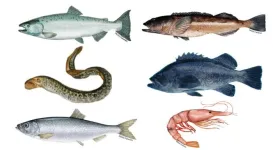(Press-News.org) UTICA, N.Y. – Matthew Nystoriak, Ph.D., associate professor of biomedical research and translational medicine at Masonic Medical Research Institute (MMRI), has uncovered groundbreaking insights into heart health in a recent study titled, Myocardial Hyperemia via Cardiomyocyte Catabolism of β-Hydroxybutyrate. The research highlights how a ketone body called β-hydroxybutyrate (3-OHB) — a molecule produced by the liver when breaking down fat — can enhance blood flow to the heart.
According to the CDC, heart disease is the leading cause of death in the United States, and ischemic heart disease, caused by insufficient blood and oxygen supply to the heart, as the number one cause in the world. Understanding how to regulate and improve blood flow to the heart is essential for developing new treatments and improving patient outcomes.
Dr. Nystoriak, recently recruited to MMRI, collaborated with the University of Louisville to show that elevated levels of 3-OHB, which occurs during fasting, exercise, or as a result of certain diabetes medications like SGLT2 inhibitors, improve cardiac blood flow. While ketones have long been associated with heart health, how they work has remained unclear — until now. This study revealed that heart muscle cells using 3-OHB as an energy source drives better blood flow, a process known as hyperemia. These findings suggest that the heart’s ability to switch between different energy sources, such as fats, sugars and ketones, plays a crucial role in maintaining its blood and oxygen supply. This discovery could open new doors for therapies targeting heart disease and improving patient outcomes.
“These findings suggest that ketone body delivery to the heart could represent a promising strategy for improving oxygen delivery in patients with ischemic heart disease,” said Nystoriak. “This research further highlights the potential of ketogenic approaches, such as lifestyle changes or targeted therapies, to improve cardiovascular health.”
This work was a collaboration with scientists at the University of Louisville, Kentucky, and included, Kara R. Gouwens, Ph.D., Yibing Nong, Ph.D., Ning Chen, Ph.D., Emily B. Schulman-Geltzer, Ph.D., Helen E. Collins, Ph.D. and Bradford G. Hill, Ph.D.
“Dr. Nystoriak’s work stresses the importance of research,” said Amy R. DeMetri, chair of the American Heart Association board of directors in the Mohawk Valley and business consultant, ARD Consulting. “The American Heart Association is proud to publish findings that help us all understand and improve heart and brain health. Since 1949, we have funded over $5.9 billion in research. It’s exciting to think that scientific research done by local scientists right here in the Mohawk Valley could have an impact worldwide.”
“We are thrilled to have our study published in Arteriosclerosis, Thrombosis, and Vascular Biology, one of the leading journals by The American Heart Association in this field of research,” said Nystoriak. “These findings open doors for further investigation into ketone-based therapies that could transform care for patients suffering from ischemic heart disease.”
To learn more, visit mmri.edu.
END
MMRI scientist publishes breakthrough study detailing how ketones improves blood flow to the heart
Matthew Nystoriak, Ph.D., has uncovered groundbreaking insights into heart health in a recent study titled, Myocardial Hyperemia via Cardiomyocyte Catabolism of β-Hydroxybutyrate
2025-01-06
ELSE PRESS RELEASES FROM THIS DATE:
2025 Seismological Society of America Annual Meeting
2025-01-06
SSA will be holding its annual meeting on 14-18 April 2025 at the Hilton Baltimore Inner Harbor Hotel in Baltimore, Maryland. The meeting attracts more than 800 scientists, engineers and policymakers for presentations and posters that cover the latest seismological research from around the globe.
The meeting's topics are presented in 48 technical sessions, including topics such as earthquake forecasting, seismic hazard assessment, explosion forensics, exploring extraterrestrial ...
New AI tool uses routine blood tests to predict immunotherapy response for many cancers
2025-01-06
Doctors around the world may soon have access to a new tool that could better predict whether individual cancer patients will benefit from immune checkpoint inhibitors — a type of immunotherapy — using only routine blood tests and clinical data.
The artificial intelligence–based model, dubbed SCORPIO, was developed by a team of researchers from Memorial Sloan Kettering Cancer Center (MSK) and the Tisch Cancer Institute at Mount Sinai.
The model is not only cheaper and more accessible, it’s significantly better at predicting outcomes than the two current biomarkers approved by the U.S. Food and Drug Administration (FDA), ...
1 in 4 U.S. veterans aged 60+ report having being diagnosed with cardiovascular disease at some point, with potential implications for their physical and mental health
2025-01-06
1 in 4 U.S. veterans aged 60+ report having being diagnosed with cardiovascular disease at some point, with potential implications for their physical and mental health
####
Article URL: https://journals.plos.org/mentalhealth/article?id=10.1371/journal.pmen.0000192
Article Title: Prevalence, correlates, and mental and physical health burden of cardiovascular disease in older U.S. military veterans
Author Countries: United States
Funding: The authors received no specific funding for this work. END ...
These 11 genes may help us better understand forever chemicals’ effects on the brain
2025-01-06
BUFFALO, N.Y. — Per- and polyfluorinated alkyl substances (PFAS) earn their “forever chemical” moniker by persisting in water, soil and even the human brain.
This unique ability to cross the blood-brain barrier and accumulate in brain tissue makes PFAS particularly concerning, but the underlying mechanism of their neurotoxicity needs to be studied further.
To that end, a new study by University at Buffalo researchers has identified 11 genes that may hold the key to understanding the brain's response to these pervasive chemicals commonly found in everyday items.
These genes, some involved in processes vital for neuronal ...
Microplastics widespread in seafood people eat
2025-01-06
The tiny particles that shed from clothing, packaging and other plastic products are winding up in the fish that people eat, according to a new study from Portland State researchers, highlighting a need for technologies and strategies to reduce microfiber pollution entering the environment.
Building on previous research exploring the prevalence of microplastics in bivalves like Pacific oysters and razor clams, researchers in PSU’s Applied Coastal Ecology Lab — led by ...
Lead pollution likely caused widespread IQ declines in ancient Rome, new study finds
2025-01-06
Lead exposure is responsible for a range of human health impacts, with even relatively low levels impacting the cognitive development of children. DRI scientists have previously used atmospheric pollution records preserved in Arctic ice cores to identify periods of lead pollution throughout the Roman Empire, and now new research expands on this finding to identify how this pollution may have affected the European population.
The study, published Jan. 6th in Proceedings of the National Academy of Sciences (PNAS), ...
Researchers reveal ancient dietary habits and early human use of plant foods
2025-01-06
A new archaeological study, conducted along the Jordan River banks south of northern Israel’s Hula Valley, offers a fresh perspective on the dietary habits of early humans, challenging conventional wisdom about prehistoric diets. The research reveals that ancient hunter-gatherers relied heavily on plant foods, particularly starchy plants, as a major energy source. The findings suggest that, contrary to popular belief, the diet of early hominids was not solely focused on animal protein, but rather, featured a diverse range of plant-based foods, including acorns, cereals, ...
NRG Oncology adds new theranostics subcommittee to organization, new leadership members for CCDR and early phase trial oversight committees
2025-01-06
NRG Oncology (NRG), a National Cancer Institute (NCI) National Clinical Trials Network (NCTN) group focused on improving outcomes for adults with cancer through multi-center clinical research, recently announced the creation of a new Theranostics Subcommittee, as well as two leadership role updates within the organization’s current committees.
NRG established the Theranostics Subcommittee under the Imaging Committee and Radiation Oncology Committee umbrellas within the organization as theranostics is a medical field that combines diagnostic imaging and therapeutic interventions. The Theranostics Subcommittee will be focused on the following goals: building a more robust theranostics ...
New NEJM Perspective article highlights urgent need for widespread adoption of Fracture Liaison Services (FLS) to combat rising burden of osteoporosis-related fractures
2025-01-06
A new Perspective article published in the New England Journal of Medicine emphasizes the critical role of Fracture Liaison Services (FLS) in addressing the growing global burden of osteoporosis-related fractures, particularly hip fractures.
The World Health Organization has identified osteoporosis as a major global health issue because it poses significant risks of disability and premature death. Osteoporosis-related fractures are a leading cause of disability and long-term care needs for older adults, with hip fractures being particularly devastating. The Perspective reports that within the first 12 months following a hip fracture, ...
Hornwort genomes provide clues on how plants conquered the land
2025-01-06
Over 450 million years ago, plants began the epic transition from water to dry land. Among the first pioneers were the ancestors of humble hornworts, a group of small, unassuming plants that have persisted to this day. New research reveals insights into the genetic blueprints of hornworts, uncovering fascinating details about plant evolution and the early days of life on land.
“We began by decoding the genomes of ten hornwort species, representing all known families within this unique plant group,” said Peter Schafran, a postdoctoral scientist at the Boyce Thompson Institute ...
LAST 30 PRESS RELEASES:
An ‘illuminating’ design sheds light on cholesterol
Who is more likely to get long COVID?
Study showcases resilience and rapid growth of “living rocks”
Naval Research Lab diver earns Office of Naval Research 2025 Sailor of the Year
New Mayo-led study establishes practical definition for rapidly progressive dementia
Fossil fuel industry’s “climate false solutions” reinforce its power and aggravate environmental injustice
Researchers reveal bias in a widely used measure of algorithm performance
Alcohol causes cancer. A study from IOCB Prague confirms damage to DNA and shows how cells defend against it
Hidden viruses in wastewater treatment may shape public health risks, study finds
Unlock the power of nature: how biomass can transform climate mitigation
Biochar reshapes hidden soil microbes that capture carbon dioxide in farmland
Reducing saturated fat intake shows mortality benefit, but only in high-risk individuals
Manta rays create mobile ecosystems, study finds
Study: Mixed results in using lipoic acid to treat progressive multiple sclerosis
Norbert Holtkamp appointed director of Fermi National Accelerator Laboratory
New agentic AI platform accelerates advanced optics design
Biologists discover neurons use physical signals — not electricity — to stabilize communication
Researchers discover that a hormone can access the brain by hitchhiking
University of Oklahoma researcher awarded funding to pursue AI-powered material design
Exploring how the visual system recovers following injury
Support for parents with infants at pediatric check-ups leads to better reading and math skills in elementary school
Kids’ behavioral health is a growing share of family health costs
Day & night: Cancer disrupts the brain’s natural rhythm
COVID-19 vaccination significantly reduces risk to pregnant women and baby
The role of vaccination in maternal and perinatal outcomes associated with COVID-19 in pregnancy
Mayo Clinic smartwatch system helps parents shorten and defuse children's severe tantrums early
Behavioral health spending spikes to 40% of all children’s health expenditures, nearly doubling in a decade
Digital cognitive behavioral treatment for generalized anxiety disorder
Expenditures for pediatric behavioral health care over time and estimated family financial burden
Air conditioning in nursing homes and mortality during extreme heat
[Press-News.org] MMRI scientist publishes breakthrough study detailing how ketones improves blood flow to the heartMatthew Nystoriak, Ph.D., has uncovered groundbreaking insights into heart health in a recent study titled, Myocardial Hyperemia via Cardiomyocyte Catabolism of β-Hydroxybutyrate









